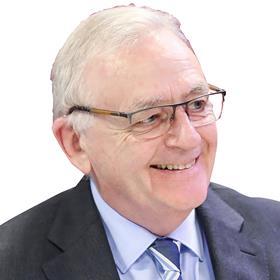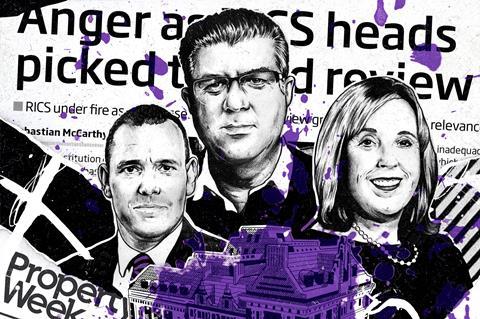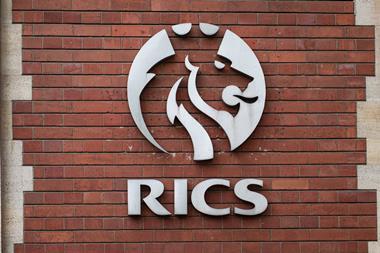There are three items of ‘any other business’ before the Royal Institution of Chartered Surveyors fully embarks on Agenda for Change 2.0.

The officers who ran the ship have mostly gone, cashiered after an inquiry by Alison Levitt QC found them wantonly steering their own course. The Bridge is therefore almost empty. These AOB items will need to be chivvied along by The Windsor Group – more about them later.
Item one: update the books before Christmas. Members should not have to wait until next year for the accounts to July 2021 to be published. How much has the Levitt inquiry cost? A million? More? Less? Best also to set fresh outside eyes on the casus belli, the original clash over cash management, which auditors BDO found wanting. The last thing needed is for something nasty to be found in the woodshed in 12 months’ time.
Item two: no dithering over who will head a now-promised external review of the organisation. Please, not some mind-your-manners retired civil servant. Alison Levitt may cost more, but by gum, she appears worth it; a woman of preternatural insight, as shown by her 470-page review, which led to the leaving of an overbearing chief executive, Sean Tompkins, his over-compliant president Kath Fontana and management board chair Chris Brooke.
The new chief executive? Don’t appoint on the rebound is all that can be usefully said
Item three: question the wisdom of the current presidential succession plan. Fontana’s replacement is Clement Lau of Hong Kong Land. Lau is to be followed by Ann Gray, a real estate broker from California. Gray is to be followed by Tina Paillet from Italian Insurer Generali. Fine folk all, no doubt. But not the figureheads you would pick in hindsight to oversee a renovation programme to be directed from HQ in Parliament Square.

The original 1999 Agenda for change was a three-year restructuring plan that promoted international growth and pruned the Rotary Club-like branch structure. Richard Lay of DTZ, Simon Kolesar of EC Harris and enigmatic property investor Jonathan Harris worked together on the project between 1999 and 2003. The international expansion succeeded: membership rose from 75,000 to 113,000. Good work. The RICS is now a global brand.
Real and lasting damage
But pruning the 32 county town branches and trying to grow a confusing multiplicity of city-based interest groups did real and lasting damage. As did jacking up the fees to pay for overseas expansion: by 42% in 2003 for RICS fellows. Something lost has not yet been regained. The roots of today’s dissatisfaction date back nearly 20 years. Three UK-based presidents in a row would be better placed to oversee a restoration of trust.
This is where the aforementioned ‘Windsor Group’ come in. Only when representatives of the top dozen or so property practices woke up late to the gravity of the situation and made it clear they wanted an inquiry was one set up.
They and the big construction consultants are largely responsible for paying the piper, via members’ fees. They also need to call the tune: on the accounts, on Levitt’s reappointment, on presidential succession.
There are actually two critical appointments in train. The first is chair of the management board, a £70,000-a-year job usually given to a distinguished, well-connected member of the profession. That appointment is imminent. Fingers crossed it is someone liked and trusted by those who pay the piper. The new chief executive? Don’t appoint on the rebound is all that can be usefully said to those searching for a replacement to Sean Tompkins.
This saga has damaged the RICS, but not as much as those of us covering it would like to think. Around 90% of members take only a mild interest in what goes on in Parliament Square. The pride and pleasure expressed by new entrants when they become able to set the letters RICS after their name is still palpable. And 5% of members will never be content. Which leaves a valiant 5% of members wrestling to get the ship back on course.
Peter Bill is a journalist and the author of Planet Property and Broken Homes






























1 Readers' comment